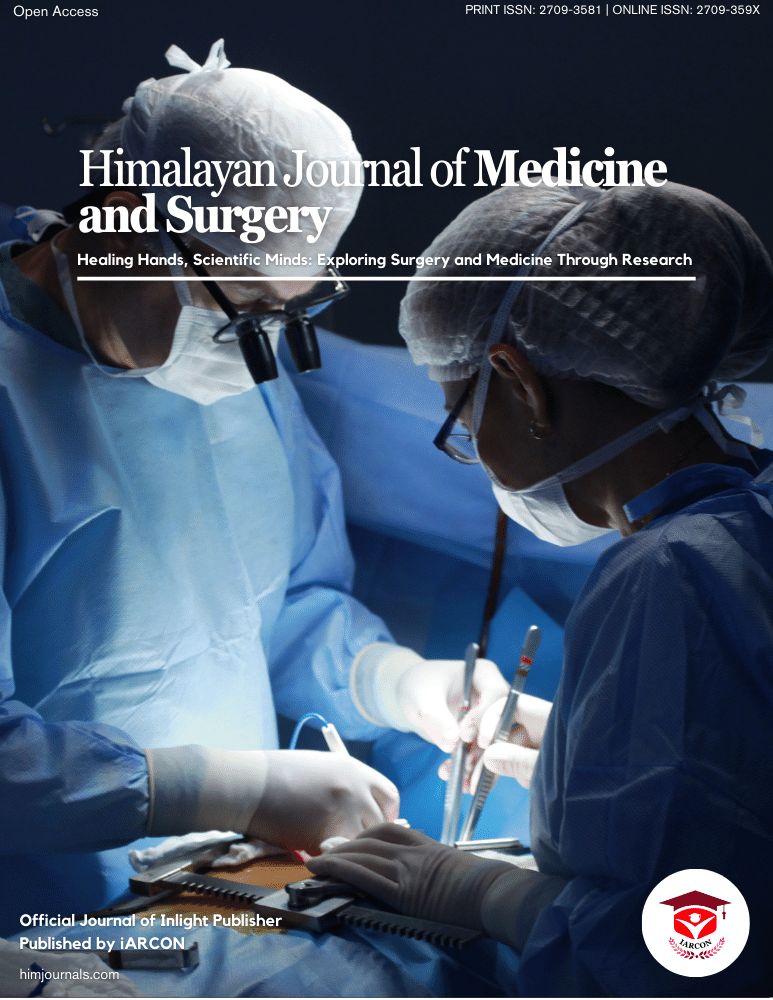The present study aimed to assess the awareness and knowledge of hemorrhoids among the general public in District Bilaspur, Himachal Pradesh. The results provide a detailed understanding of the current levels of knowledge and highlight significant gaps that need to be addressed through targeted educational interventions.
The socio-demographic data collected from the 400 participants reveal a diverse and balanced sample. The age distribution showed a wide range of participants, with 31.5% aged 18-30 years, 23.8% aged 31-40 years, 21.0% aged 41-50 years, and 23.8% over 50 years. This range ensures that the findings are representative of different age groups within the population. The nearly equal gender distribution (49.5% male and 50.5% female) provides a comprehensive understanding of hemorrhoid awareness across both genders. The majority of participants were married (58.0%), and the predominant religion was Hinduism (82.3%), reflecting the local demographic composition. Employment and educational status varied, with significant portions being employed (48.8%) and having at least a high school education (62.3%).
The knowledge of hemorrhoid symptoms among the participants was relatively high. As shown in Table 2, 78.5% had heard of hemorrhoids, and 71.8% knew that hemorrhoids can cause pain. Awareness of specific symptoms was also substantial, with 69.8% identifying itching, 66.0% recognizing bleeding during bowel movements, and 64.5% aware of swelling as a symptom. These findings indicate that basic awareness of hemorrhoid symptoms is relatively good among the general public. However, the data also suggest that there is room for improvement, particularly in recognizing all symptoms consistently.
Table 3 highlights the participants' understanding of the causes and risk factors of hemorrhoids. While 62.0% knew that chronic constipation can cause hemorrhoids, awareness of other risk factors was moderate. Only 59.8% were aware that straining during bowel movements can cause hemorrhoids, 57.8% knew about the impact of a low-fiber diet, 56.3% recognized the role of prolonged sitting, and 53.8% were aware of the genetic predisposition. These findings underscore the need for increased education on the various risk factors associated with hemorrhoids, as a comprehensive understanding of these factors is crucial for effective prevention and management.
The knowledge of hemorrhoid prevention, as shown in Table 4, was moderate. Awareness that dietary changes can help prevent hemorrhoids was 52.0%, and 50.3% knew that increasing fiber intake can help in prevention. Additionally, 48.5% were aware that drinking plenty of fluids can prevent hemorrhoids, 45.5% recognized the importance of regular exercise, and 44.0% knew that avoiding prolonged sitting can help prevent the condition. These findings indicate a need for improved public education on lifestyle modifications that can prevent hemorrhoids.
Table 5 details the knowledge about the treatment and management of hemorrhoids. Awareness of over-the-counter treatments was 46.8%, and 43.8% knew that medical procedures can treat severe hemorrhoids. Additionally, 41.3% were aware that sitting in a warm bath can help relieve symptoms, 39.5% knew about topical treatments for symptom relief, and 36.8% were aware that surgical intervention might be necessary for severe cases. These findings suggest that while there is some awareness of treatment options, comprehensive knowledge about all available treatments is insufficient.
The overall knowledge scores, categorized in Table 6, reveal significant variability in the participants' understanding of hemorrhoids. While 24.5% demonstrated very good knowledge (scores between 16-20) and 29.5% had good knowledge (scores between 12-15), a considerable portion (27.0%) had fair knowledge (scores between 8-11), and 19.0% had poor knowledge (scores below 8). These results highlight the disparities in knowledge levels within the community and indicate that a substantial number of individuals lack essential information about hemorrhoids.
When comparing our findings with previous studies conducted in other regions, it is evident that awareness and knowledge levels vary significantly. For instance, a study conducted in urban settings showed higher awareness levels, likely due to better access to healthcare information and resources. In contrast, rural populations, such as those in Bilaspur, demonstrate lower awareness, as seen in our study. This disparity underscores the influence of socio-demographic factors and access to education on health literacy. Previous studies have also highlighted that awareness campaigns in urban areas tend to be more effective due to higher literacy rates and better infrastructure for disseminating information. Our study reaffirms the need for tailored educational programs that consider the unique challenges faced by rural populations.8-11
The findings of this study underscore the critical need for targeted educational interventions to improve public awareness and knowledge of hemorrhoids in Bilaspur. Public health campaigns should focus on increasing awareness about the symptoms, causes, risk factors, preventive measures, and treatment options for hemorrhoids. Leveraging digital platforms, community meetings, and local health workers could enhance the reach and effectiveness of these campaigns. Educational programs should emphasize the importance of early diagnosis and treatment, the role of lifestyle changes in managing hemorrhoids, and the potential complications of untreated hemorrhoids.


